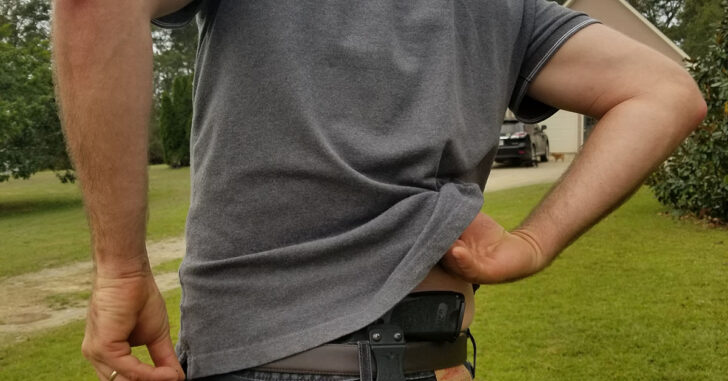The easiest way for my family to go Christmas shopping is if we all go to the mall at the same time, split up, and convene back at a set time. This gives the kids an opportunity to fan out and pick out gifts for their friends at school and sports.
As a concealed carrier, I know that it’s not just my life I have to worry about. There’s countless people around me who are just as interested in preserving themselves. And there’s also my family — who may or may not be nearby if a bad situation were to occur.
I don’t usually talk to my kids point blank about scenario situations like a shooting incident in the mall. To be honest, where I live, it’s never come up — and I hope it never will.
The oldest, 13, knows how to use guns and understands proper handling but he’s still 9 years away from being a concealed carrier.
We talk about emergency situations in generalized terminology. It may be a thing that my kids see in their lifetime, it may not. I hope it isn’t.
So, in a situation where we’re all spread out and feel relatively safe, there comes a serious need to know what to do if that suddenly becomes not the case.
There have been shooting incidents at malls. There have been violent acts committed at malls.
I don’t pretend to be immune.
Concealed Carry Considerations With A Family
When it comes to concealed carry practices, I have to consider my family in addition to myself.
That’s why I use an old process I learned years back and was recently reiterated in some training I took with Rob Pincus of Personal Defense Network — altered to suit non-concealed carriers like most of my family.
- Evade
- Barricade
- Arm
- Communicate
- Respond
The first thing my kids know to do when they hear or see man-made trouble: evade. Get away from the disturbance. If people are shouting and moving, move away from the supposed source.
Outside, it’s winter time. That means freezing temperatures. Going outside and staying hidden for hours may not be possible without hypothermia. Shy of explosions and fire, my kids know that once they reach a room, barricade it up.
Find a room or shelter and barricade it up.
If there’s people looking to hurt them, I have no qualms with them picking up whatever tools are nearby that are tougher than their fists and sitting tight behind a barricade until help arrives. Fire extinguishers, sticks, rocks, whatever’s clever. Hole up and hold down the fort until police get there.
Because our oldest has a cell phone, he knows to text or call me as soon as he’s somewhere safe. That’s our version of communicate. Talk to police, talk to firefighters or emergency crew, talk to me.
That goes for while he’s in the mall or anywhere else. The youngest doesn’t have a cell phone and she gets stuck with her older brother, myself, or mom.
And the last step in this sequence is Respond. For our thirteen year old, if he’s gotta make a choice to defend himself, may as well make it and stick to it. If the barricade doesn’t hold and help isn’t there, he’s going to have to do for himself. That’s a father’s worst nightmare.
Everyone Has A Job
As for me, my job is to get my family to safety. I need to get them behind cover and behind me. I’m the one with the gun. And I won’t use it or even pull out my gun unless I have clear and unimpeded visual sights on the bad guy and he is headed in my direction.
I can’t risk drawing attention to myself or my family.
My job is to get them outside, get them into the back of the car, keep their heads down, and safely drive out of the situation as soon as possible.
It’s not as simple as just drawing down on an unknown bad guy. There’s a process and a plan. There’s steps to educate the family on their roles during different emergency situations. Give them all a heads-up. If they know what their job is — stay behind dad, stay behind cover, and follow my or their mother’s instructions.
My oldest is in charge of the youngest. My wife and I are in charge of the kids. We know our role and have our order.
You figure out your order. Maybe your wife is the better shot or more competent gun owner. Maybe you feel more confident that your kids can handle more or less. Whatever the case, as a concealed carrier, you need to have a plan to account for what your family is doing during a defensive incident.

